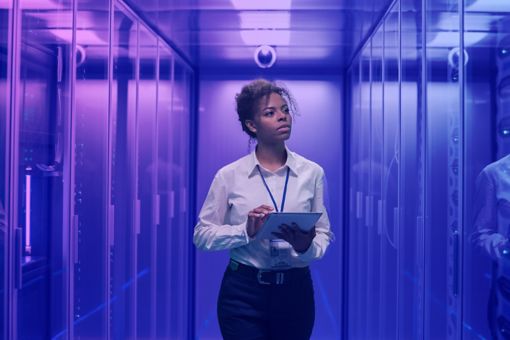“Don't spend money on the cloud just for the sake of it; have a clear objective.”
Carey Brown, a cloud transformation consultant at KPMG, shares his insights on what’s happening in then world of cloud transformation and how to overcome some of the challenges to cloud adoption.
Describe your role for us. What do you do day-to-day?
I support clients on their journey to the cloud. Or if they’re already on the cloud, I help them to get maximum value from it. Either way, it’s my job to get them from A to Z.
It’s quite a varied role. I might be responding to an RFP one day and then working with a client to achieve a given objective the next.
Whatever I’m doing, it’s a case of putting myself in the client’s shoes: understanding what their business does, and why they want to do what they’re trying to do. Then it’s a case of mapping out the steps they need to follow.
Many of the clients that I engage with aren’t in technical roles themselves, so I need to be able to communicate complex terms in a way they can understand. This helps them to see how investing in cloud services can benefit their business.
It’s a position that requires a mix of listening and people skills, analytical abilities and technical knowledge.
Where does technology come into what you do?
Technology is purely the medium: it’s the tool I use to assess and fix a client’s problems.
Essentially that’s what tech is: a set of tools which enable organisations to achieve their goals and create value for their business.
In my case, those tools are in the cloud. I take pieces from within the different cloud platforms (typically Amazon Web Services, Microsoft Azure and Google Cloud Platform) to create solutions for clients.
Why is technology so important to business transformation?
Because everything is now driven by technology. It's where we are as a society.
Technology is what drives innovation – it enables you to do things you couldn’t do before. If you're not taking advantage of it, you’ll be left behind. For businesses, it’s been that way been since the industrial age.
So, what’s happening in the world of cloud transformations at the moment?
I’m finding that there’s a lot of discussion about the next level of cloud – or as some call it, cloud strategy 2.0. For example, a lot of clients are looking at how they can best use the cloud infrastructure they’ve implemented. This is where things like the Internet of Things artificial intelligence come into the discussion.
Businesses have been moving to the cloud for a while now: being on the cloud has become a sort of baseline. Implementing new technologies on top of that is the next step.
So, clients are asking us: how can AI benefit our firm? They may not understand the technology, but they know it’s massive. It’s my job to break it down, so they can see how their business functions can take advantage of AI. This also goes for elements that are slightly less technical but are still an important part of the journey such as finance, governance, and risk. It’s going to be interesting to see the developments in these areas.
You said that businesses have been moving to the cloud for a while. What difficulties do they typically encounter?
I often see a myriad of challenges and the types of difficulties can vary greatly depending on the organisation.
For example, I’ve been asked questions such as: “How do we align our cloud strategy with our core business objectives?” and “Do we need to assess the environmental impact of our cloud strategy?”
One of the most common challenges I encounter is around addressing skill gaps within an organisation and the balance between upskilling and hiring.
How does KPMG make the difference for clients moving to or progressing with the cloud?
The way we're structured is unique. As well as technology, we bring expertise in tax, accounting, risk, governance and various other business functions. So we can take a more holistic view when designing solutions for clients.
That’s why we can help clients with the problems they come up against. We can give them clarity over their cost situation. This is how much you're spending. This is what you can switch off, and here are some alternative storage options. And this is what you’ll save as a result.
What are your top tips for businesses going through a cloud migration?
I have three:
One: understand exactly what you're trying to achieve by moving to the cloud. Don’t go through the motions just because you think it’s something you should do, or because everyone else is doing it. Like any other transformation, there has to be a clear objective behind it.
Two: make sure your employees understand that vision. Often, when staff hear that new technology is incoming, their first thought is: how will it affect my job? Will it take it away? So highlight how the transformation will benefit them in their roles.
And three: get a handle on the costs. Don't spend money just for the sake of it or because you've heard the CTO of another business rave about a particular tech. What works for one organisation won’t necessarily work for everyone.
Carey, tell us about an achievement you’re especially proud of.
Helping to change perceptions of KPMG in the cloud space.
As key sponsors and exhibitors at a recent industry event, we had to put in a lot of hard work, but the response was fantastic. Participants were saying to us, “KPMG? What are you doing here? You’re tax and accounting experts … we didn't know you did technology!”
It was a great opportunity to let people know about the scale and expertise of our tech team. They realised that we’re serious players when it comes to the cloud.
And finally, what do you do in your spare time?
Chase my kids around!
Other than that, I like to keep as active as possible. I’m not really into sitting around watching TV. I play a bit of football, go to the gym and do some martial arts. That takes up most of my time.



